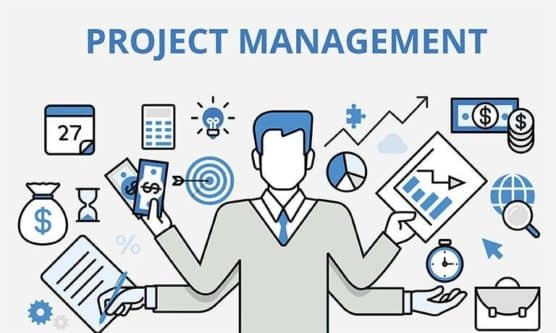
When it comes to project management in today’s world, there are a variety of approaches to choose from. There is usually more than one method to accomplish a task. As you begin searching for the right project management team, you will almost certainly come across Agile Project Management.
It is one of the most recent projects management strategies. Agile management is considered one of the most popular approaches throughout the globe due to its efficiency and excellent outcomes. To appreciate how agile teams function and if they are the best solution for your team, you must first understand what agile teams essentially are. A PMI-ACP for Beginners Course is the perfect instrument that helps you get familiar with Agile Project Management basics. However, to get a head start, the following is a beginner’s guide to the agile project management methodology.
Meaning of Agile Project Management
One of the most recent and effective projects management methods is Agile Project Management. It emphasizes mainly the project’s value and outcomes. An agile technique is a form of management that is iterative and incremental. In a short amount of time, an agile team may produce something new and make the necessary improvements.
It enables the team to divide the job into smaller, more manageable chunks. After that, these smaller units are usually dealt with in sprints or iterations. Iteration refers to a time when the strategy is sketched out and then broken down by the team according to the needs. This allows the team to comprehend and adjust to the changes quickly.
The Role of Agile Teams
The fundamental goal of agile management is to keep expenditures to a bare minimum via reducing expenses. The agile team is primarily concerned with attaining project objectives by making rapid changes and overcoming roadblocks.
It guarantees that client demands are met first and that high-quality goods are produced. In the agile management technique, stakeholders are heavily engaged at various phases of product creation. It is done in this manner in order to make the necessary modifications on time and avoid incurring additional fees in the future.
In today’s world, when everything is becoming more agile, it’s critical to maintain your company up to date as well.
Monday.com is an example of a platform that allows you to keep track of everything in one location. It’s an award-winning project and team management software that provides the finest solution for agile projects at any time. It intelligently runs your company by using the most outstanding choice accessible.
Key Attributes of Agile
Every agile team has its unique set of objectives and lessons, but there are a few guiding principles that define an agile management team.
● Customer cooperation over contract negotiations
To put it another way, the product’s eventual client must be encouraged to work with the development team. It’s to ensure that the client and the team don’t perceive each other as rivals but rather as members of the same team.
● Individuals and communication over tools & procedures
Humans must engage with one another to adjust to the earliest changes, which has an influence on more than technology outputs. Processes and technologies will never be able to replace human contact.
● Efficient software trumps thorough documentation
Regardless of how crucial documentation is in project management, software must be prioritised. The developers should not be overworked and should only provide instructions that are required to finish the assignment.
● Adapting to change instead of adhering to a strategy
Agile initiatives are unique in that they accommodate the change in a systematic way—the agile ways to change quickly and do not adhere to predetermined criteria.
Agile Methodology Steps
- Planning
The process begins with event planning and determining end objectives that will provide value to the company and its stakeholders. The team members come up with the strategy in general, considering all of the considerations. It’s crucial to remember that this isn’t the final plan and that things may alter along the route.
- Development of roadmap
Following the planning, the next stage is to establish a roadmap that will lead the company to its final objective. In the second stage, the team will develop a product backlog. It may then be used to prepare scrums and contribute to the creation of a user-centric product.
- Implementing the plan
Smaller development cycles, known as sprints, are used in agile methods. You will verify the sprints and follow up in order to carry out the project’s strategy.
- Outlining of sprints
You must guarantee that the burden is distributed equitably among the team members in order to meet the sprint’s objectives. You must also ensure that there are no obstacles or weaknesses for effective project management.
- Regular meetings
Meetings on a regular basis are an essential part of Agile project management. Daily meetings let members discuss their progress and, if required, make modifications to the plan.
Advantages of using Agile
● Superior quality product
Because of the shorter product development cycles, defects are quickly identified and corrected. It ensures that the product is free of errors and of superior quality. The product is rapidly tested and at various intervals, ensuring that the final result is of excellent quality.
● Enhanced flexibility
The main advantage of the Agile technique is that it allows for more flexibility and adaptation. Adopting anything that conforms with agile has a higher value in the era of remote working and the appropriate technologies. You obtain the essential data at the right moment when adjustments are simple to implement, thanks to the iterative methodology and immediate feedback from customers. It improves the team’s capacity to respond to changes and reduces uncertainty.
Other advantages of the Agile Methodology over conventional techniques include happier teams, more customer satisfaction, lower expenses, and so forth.
Conclusion
In a company climate where competition is constantly growing and time to market is continuously shortening, agile provides multiple advantages and few pitfalls. Its use in various sectors makes it an appealing technique, and with all of the benefits that agile project management offers, it’s here to stay.











